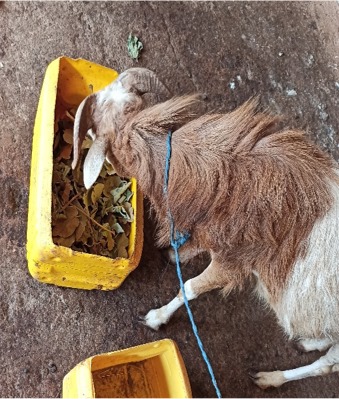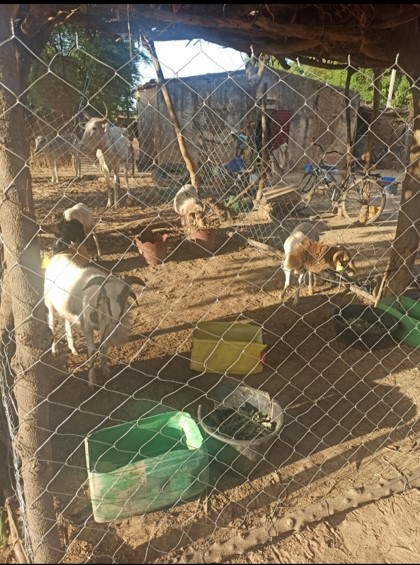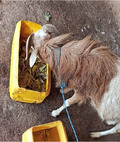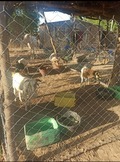Fattening is a production technique that involves preparing animals for slaughter. It is a technique that makes it possible to increase meat production in a relatively short time (Sangaré et al., 2005), in order to cover meat requirements that are, often, far from being met (FAO, 2016). In addition to poor knowledge of production techniques, the feed requirements of fattening animals is a major constraint to the success of fattening operations (Sanon et al., 2020).
In the dry season, grass fodder is of low nutritional value, and agricultural and agro-industrial by-products are not widely available, especially for low-income producers (Sanon et al., 2020). To alleviate this problem, locally available woody fodder is increasingly used in animal feed, as it is rich in nutrients and capable of covering the animals' needs (Nantoumé et al., 2018). The aim of this study was to assess the weight gain achieved by feeding a diet based on woody fodder compared with farmers' regular rations in the village of Saria, Burkina Faso.
Methodology
Six producers provided 4 rams of the Djallonké breed aged 12 to 14 months, two of which were fed according to their usual feeding practices and two with rations containing 30% woody fodder.
The woody forages were dry leaves of Khaya senegalensis, Ficus sycomorus and Piliostigma reticulatum pods. The study lasted 60 days during the dry season (April-June), including 14 days of adaptation, with the rams being weighed every week.
Results
The best weekly weight gains were observed with the Ficus sycomorus-based ration, reaching around 4 kg, followed by Khaya senegalensis with 3 kg, and Piliostigma reticulatum pods with 2 kg. The best farmer's rations only produced a gain of 2 kg.
Conclusion
The use of dry Ficus sycomorus or Khaya senegalensis leaves in the feed increases the weight gain of Djallonké rams, surpassing the rations of the Saria village farmers. These resources are, therefore, of considerable interest to improve sheep fattening efficiency.
Works cited
FAO. 2016. Review of the livestock/meat & milk sectors and the policies that influence them in Burkina Faso. FAO, Switzerland, 57 p.
Sangaré, M., Thys, E., & Gouro, A. S. (2005). Techniques d'embouche ovine, choix de l'animal et durée. Tropicultura, 7, 132-136 p.
Sanon H. O., Zorma A., Simian A., Obulbiga M. F., & Compaoré, E. 2020. Analyse des pratiques d'embouche ovine dans deux zones semi-arides du Burkina Faso: Analysis of sheep fattening practices in two semi-arid zones of Burkina Faso. Journal of Applied Biosciences, 150(1), 15390-15402 p.
Nantoumé H., Cissé S., Sow P. S., Sidibé S., Kouriba A., Olivier A., Bonneville J. & Cinq-Mars, D. 2018. Impact of rations with Pterocarpus lucens, Pterocarpus erinaceus and Ficus gnaphalocarpa forages on sheep fattening in Mali. Tropicultura, 36(4), 673-683.




 tap and then scroll down to the Add to Home Screen command.
tap and then scroll down to the Add to Home Screen command.